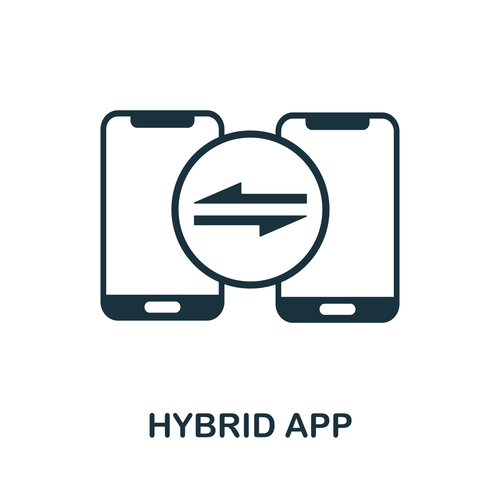The benefit of staging is that ERP vendors do not need to master the complexities of equipment integration. Connectivity becomes the responsibility of the systems integrator. ERP systems connect to real–time data and transaction data in a variety of ways. These systems are typically configured by systems integrators, who bring unique knowledge on process, equipment, and vendor solutions. Government resource planning is the equivalent of an ERP for the public sector and an integrated office automation system for government bodies. The software structure, modularization, core algorithms and main interfaces do not differ from other ERPs, and ERP software suppliers manage to adapt their systems to government agencies.

With a continuous update of data in real-time, you know what is happening in every department. ERP software can also pass the information along to outside stakeholders. Their investment in the company is dependent, typically, on how efficiently a company is running and how financially strong it is. The data within an ERP system reveals the relevant information to all stakeholders to keep them abreast of the company’s capacity to function and generate revenue. ERP works particularly well for tracking and managing things such as a company’s capacity for production, cash levels, raw materials at its disposal, payroll information, and purchase orders. Before ERP systems, coordinating between multiple worksites took a lot of time and effort.
Order Management Application
Spend time documenting problem areas, processes that work, questions you have, and any other observations you want to record in preparation for implementing a new system at your business. This resource will provide you with an in-depth overview of the topic of Enterprise Resource Planning. ERP solutions provide a centralized database that allows real-time visibility and data sharing across all departments and business locations.
A parallel rollout involves using a legacy system in parallel with the new system for an extended time. Parallel rollouts are typically the least risky way to implement an ERP system because it enables users to revert to a legacy system in the event of any roadblocks. This implementation method ensures that users always have https://www.globalcloudteam.com/ access to vital functions regardless of any problems that occur. Once UAT is complete, the team plans for the data cut-over and go-live. We draft a detailed plan for when to stop the old system and start the new to minimize any disruption. During go-live, we institute a period of highly focused customer care and support.
An Airline That Needs To Consolidate HR And Payroll Data
Use this following guide to learn about the basics of ERP, the best ERP solutions, and how to choose the right ERP system for your organization. Today’s ecommerce companies have access to more data than ever before. Check out some customer stories of companies that have used an ERP system and how it benefited them. Some of them have switched from using multiple legacy software to an ERP. The idea is that employees don’t have to travel to the office to do their job. They can sit in their homes, a coworking space, or a coffee shop.
- You get new capabilities that automate the processes slowing you down, along with new insights so you can make better decisions.
- ERP systems are priced with the needs of the target audience in mind, so those built for emerging and high-growth businesses will be more affordable than those used by Fortune 500 enterprises.
- To avoid implementation not being as expected, businesses need to plan carefully.
- Case, a manufacturer of tractor and construction machinery, worked with IBM to develop what is believed to be the first MRP system.
- With better business insight you can improve your decisions using single aggregated data system.
ERP systems expanded to encompass business intelligence while handling other functions such as sales force automation , marketing automation and eCommerce. An engineer named Ford Whitman Harris developed the Economic Order Quantity model, a paper-based manufacturing system for production scheduling. Oracle University provides learning solutions to help build cloud skills, validate expertise, and accelerate adoption. Get access to free basic training and accreditation with the Oracle Learning Explorer program. Upgrading an on-premises system is costly, sprawling, rife with uncertainty, and disruptive to the business.
ERP (enterprise resource planning)
The cloud provider patches, manages, and updates the software several times a year—rather than an expensive upgrade every 5 to 10 years with an on-premises system. The cloud can reduce both operational expenses and capital expenses because it eliminates the need for companies to purchase software and hardware, or hire additional IT staff. These resources can instead be invested in new business opportunities, and the organization is always up-to-date on the most recent ERP software.

Learn accounting fundamentals and how to read financial statements with CFI’s free online accounting classes. CFI is the official provider of the Financial Modeling and Valuation Analyst ®certification program, designed to transform anyone into a world-class financial analyst. The Supreme Court’s affirmative action ruling could change tech recruiting, prompting companies to broaden recruiting efforts and… KM programs need a leader who can motivate employees to change their routines. With its Cerner acquisition, Oracle sets its sights on creating a national, anonymized patient database — a road filled with …
Integrated platform
With a continuous flow of information between the various business units, there is efficient collaboration and coordination among employees and departments, resulting in the smooth functioning of your business. Since the ERP system is what is ERP a plug-and-play model, these modules can be integrated with ease. Businesses need to pay the license fee of these modules, and they are good to go. This cross-functional flow of data is possible because of a centralized database.
Make sure new functionality and innovations are made available at the same rate regardless of where you choose to deploy the solution. One of the most important considerations when it comes to ERP deployment is to look for a software vendor who offer choice, parity and freedom of movement. The outcome led to a 99.9% automation of the company’s employee data transformation process.
Disadvantages of ERP Systems
ERP synchronizes reporting and automation by reducing the need to maintain separate databases and spreadsheets that would have to be manually merged to generate reports. This combined data collection and reporting offers valuable insight, such as where to cut costs and streamline processes, providing the information to make real-time business decisions. The main purpose of an ERP system is to increase organizational efficiency of an organization by managing and improving how company resources are utilized. Improving and/or reducing the number of resources necessary without sacrificing quality and performance are keys to effectively improving business growth and profitability. Spend less time compiling data and more time understanding what it tells you.
In this step, we meet with the customer to understand requirements, define the scope of work, set expectations, and identify timing, costs and resources. We then commit to a signed statement of work which acts as the foundation of the project. Day-to-day processes are difficult or overly time consuming, such as paper-based accounting, financial reporting, etc. Business development often focuses on goals that coincide with a company’s short-term and long-term growth, as well as analyzing potential business challenges. Conducting a regular analysis of systems and processes helps identify when a business may need to integrate an ERP system.
Change your country or region.
A key difference between an ERP and an SMB RP is that An enterprise resource planning solution like those offered by NetSuite forces your business to change its accounting software. ERP has evolved over the years from traditional software models that made use of physical client servers and manual entry systems to cloud-based software with remote, web-based access. The platform is generally maintained by the company that created it, with client companies renting services provided by the platform. Organizations have always struggled to balance traditional ERP’s high costs and complexity against the need for customized features and flexibility, all while meeting the demands of the business. Watch and learn how Oracle ERP Cloud delivers connected teams, unified data, and real-time insights to help you and your finance team ensure that the best business decisions are made. With ERP delivered as a service in the cloud, your organization can be future-ready and outpace change.

